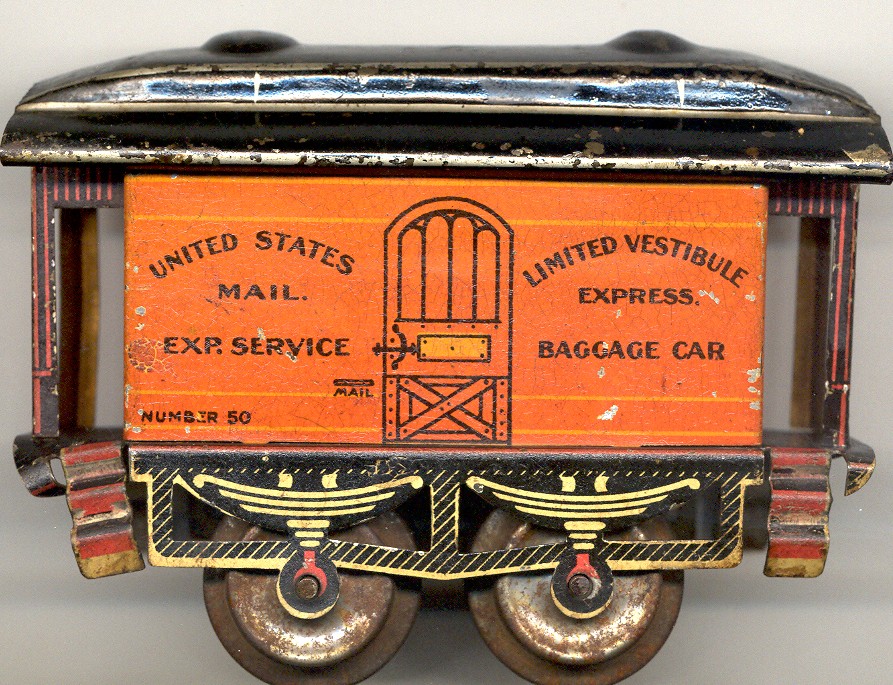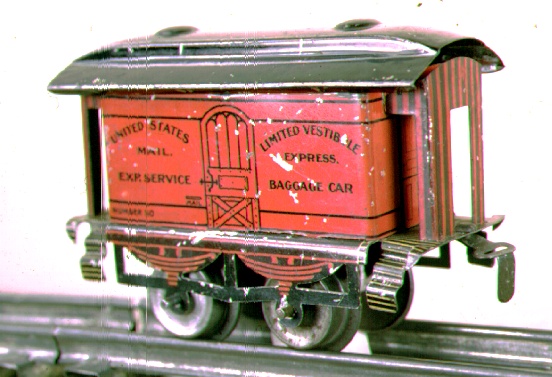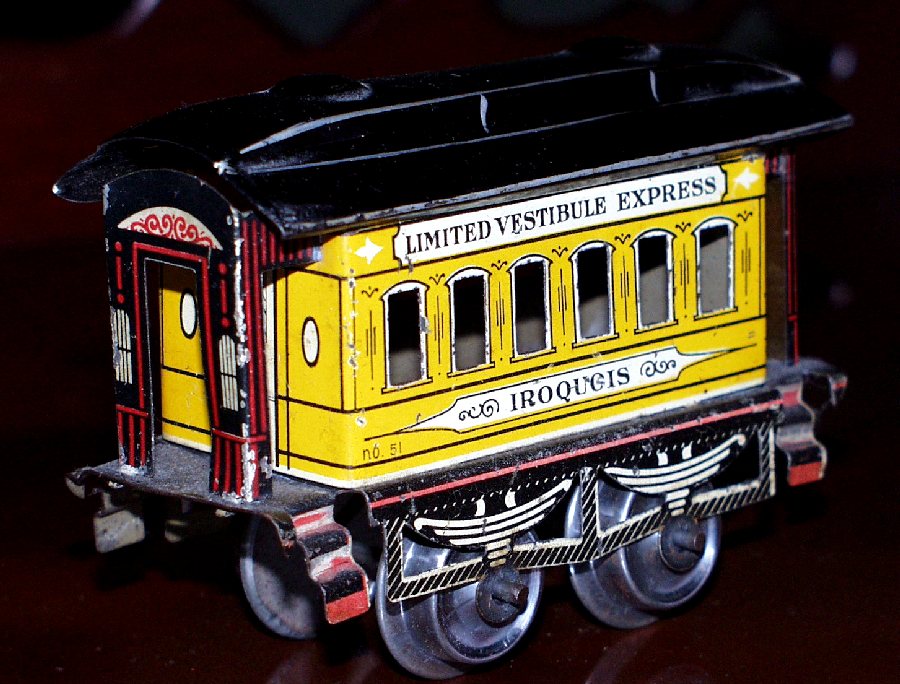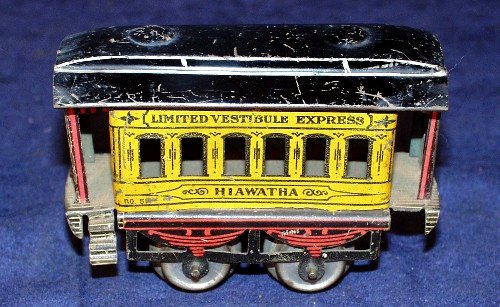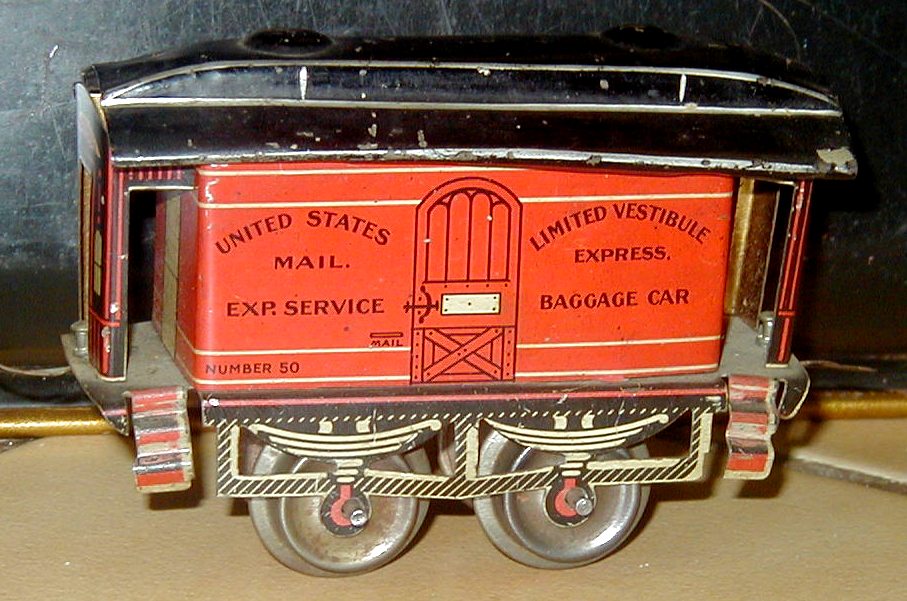
One of the earliest versions of the 3rd series baggage car (Type 3 frame) which can be differentiated by the full litho frame (cross hatching on the connecting bars) and the full three color lithograph (Red, white and black) (note the white door handle). this car is also unusual in that it has the white spring frame. White spring cars are the rarest of these early cars and may have come only in the more expensive sets. This particular baggage and the other white spring cars in this series appear to have been made for 2 or 3 cars sets that contained a 3rd series No. 11 with the unusual cross-hatch frame tender.
Another White spring No. 50 baggage, but this one is almost an orange color - the reason is that the background lithograph is actually a yellow/orange instead of the normal white. The yellow/orange background lithograph is identical to the brown, white spring Iroquois car, which is appropriate since the car above was found in the same original set.
|
|
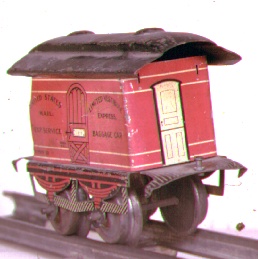 |
Same car as above except it has the Type 4 frame, next to it is a side view with the vestibules removed showing the three color lithography.
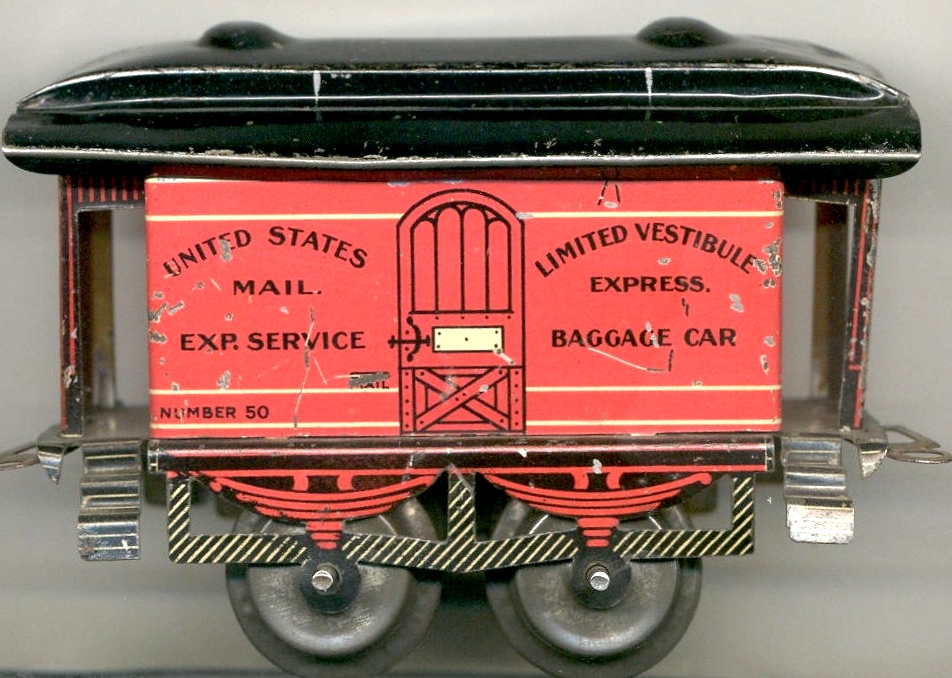
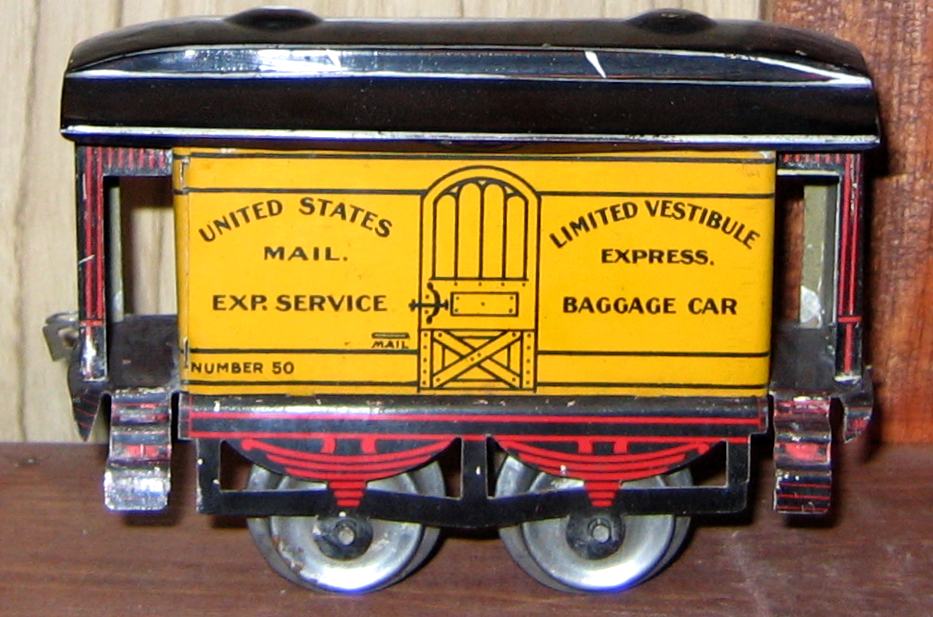
Circa 1905-06 this is a yellow No. 50 baggage with a type V (red hatching on steps) frame .
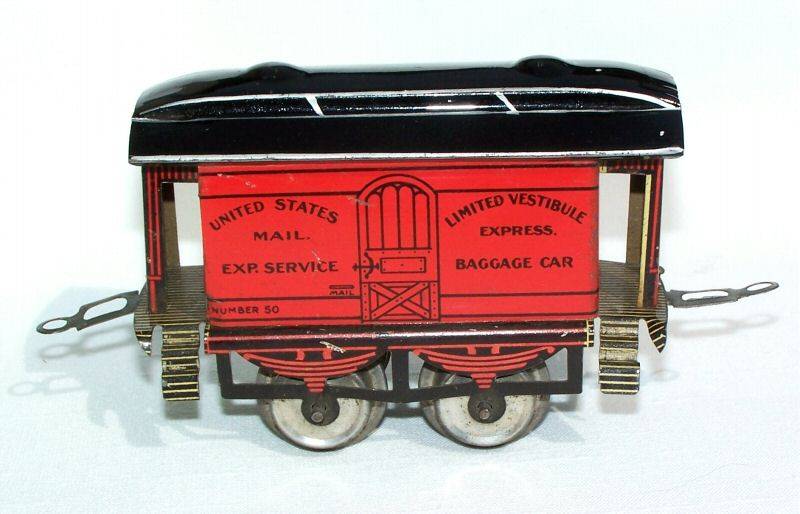
The more common variation of the 3rd Series No. 50. This is only a two color lithograph with a Type 5 frame.
Same car as above only more side view showing black and cherry red striping on the vestibules, normally the vestibule have some fancy ornate windows and awnings. NOTE that both of these cars have hook couplers - that's because they were sold with Brooklyn / Buffalo cars

Similar car as above but notice that the vestibule on left side is plain yellow in color and the vestibule on right is plain blue in color. Just goes to show Ives would use whatever they had around to get something put together.
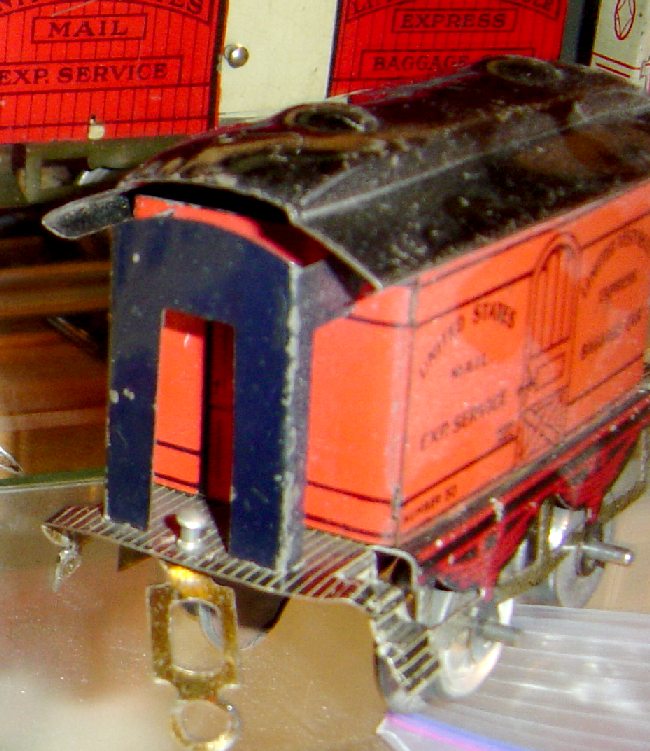
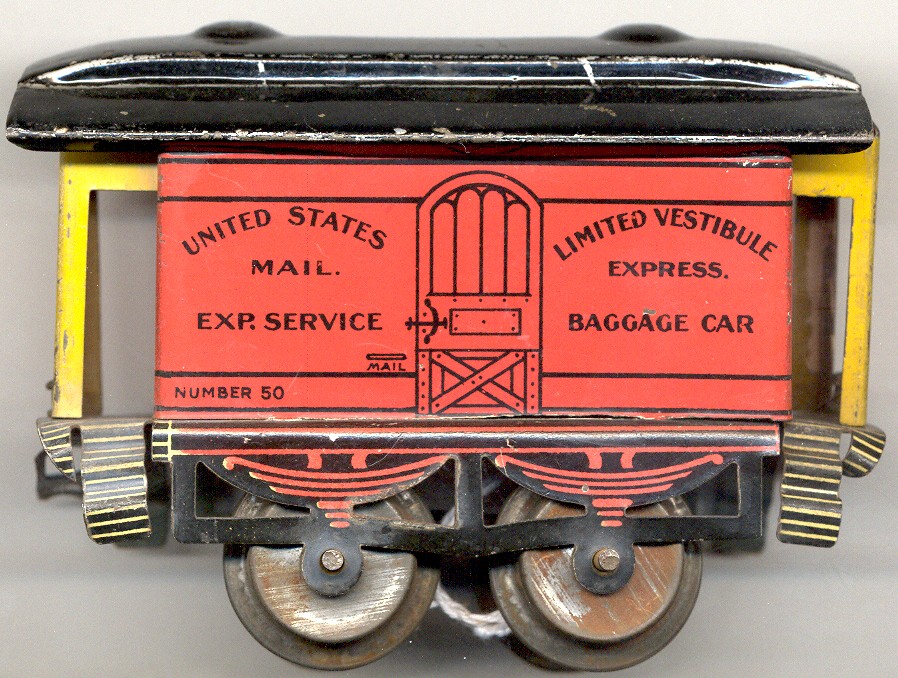
The red baggage above has yellow vestibules with a type 6 frame. The example below is yellow with green vestibules - pictured next to an early hand painted car for comparison.

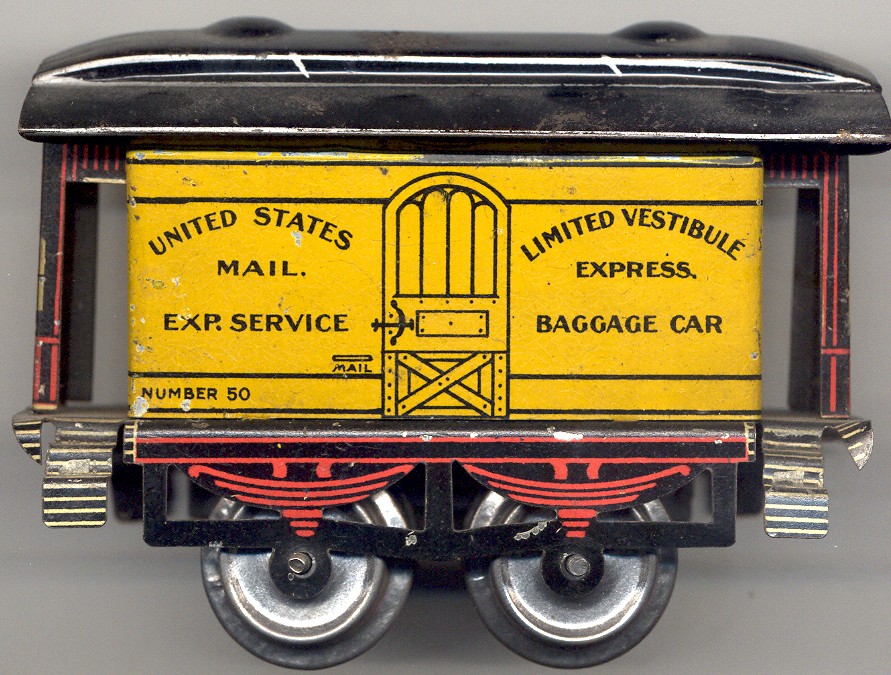
The yellow version of the 3rd series baggage car, note that it is lithographed in only two colors probably making it later in production than the early red ones with three color lithography. We're not aware of any three color lithographed yellow baggage's, and to further confuse the issue the baggage car came in only Red and Yellow even though the 51 Iroquois car came in several different colors.
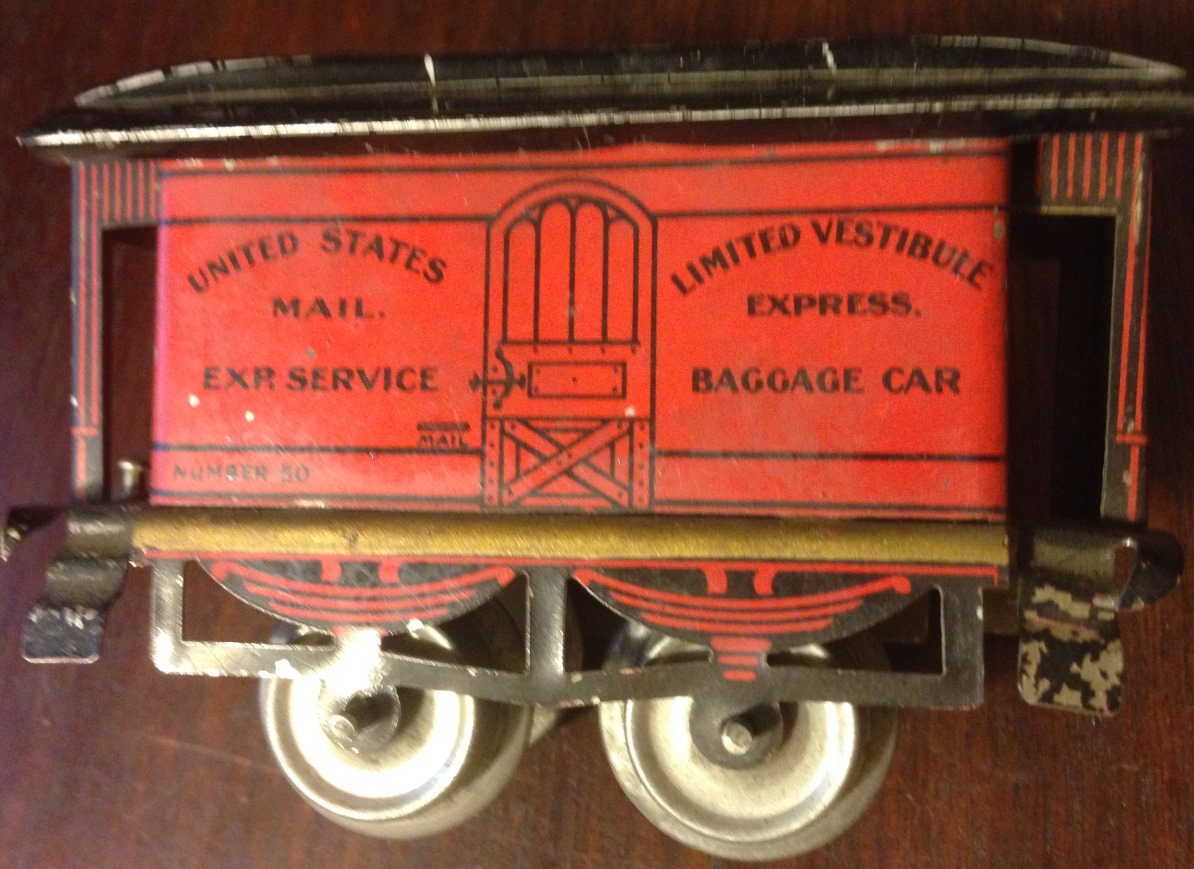
Another late baggage but what we want you to notice here is the gold bead stripe above the springs.
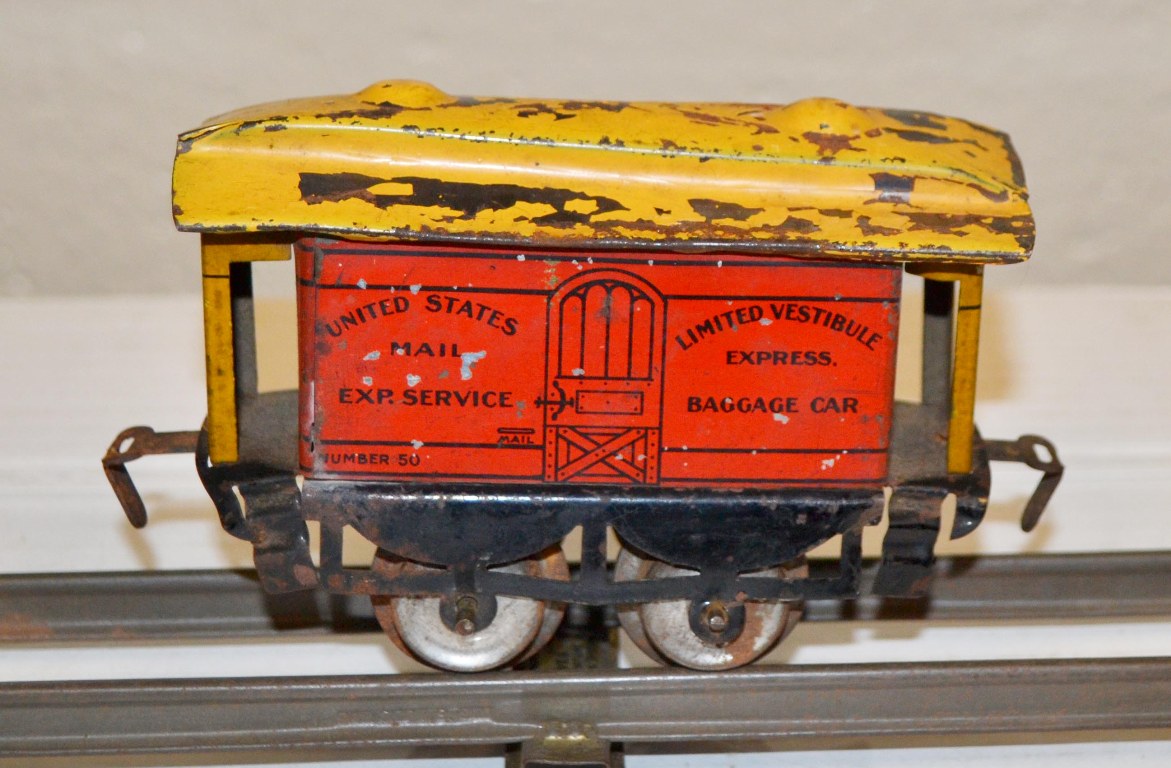
Here's a very late No. 50 with heavy hook couplers (post 1910), plain frame and solid yellow lithographed vestibules. The roof paint is unique but original. I've only seen this color on the roof of the early Buffalo trolley.
|
The following 51 cars all have 3 color lithographs and are all Iroquois. |
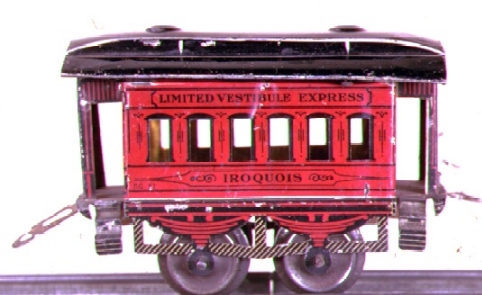 |

|
The above car looks like your average red Iroquois car, but besides having Type 4 frame, it also has the 3 color lithography - The only way you can see it is to look at the end of the car where the doors and windows are to see the white contrast.
 |
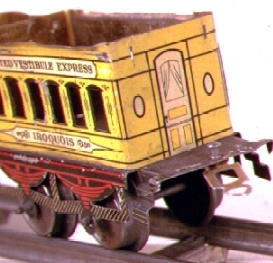 |
This is the early 3 color litho Iroquois car note the white letter boards and white doors and windows on the end the one above has a Type 4 frame and the one below has a Type 3 frame.
Circa 1903 above and 1904 below - they are identical except for the white spring frame above.
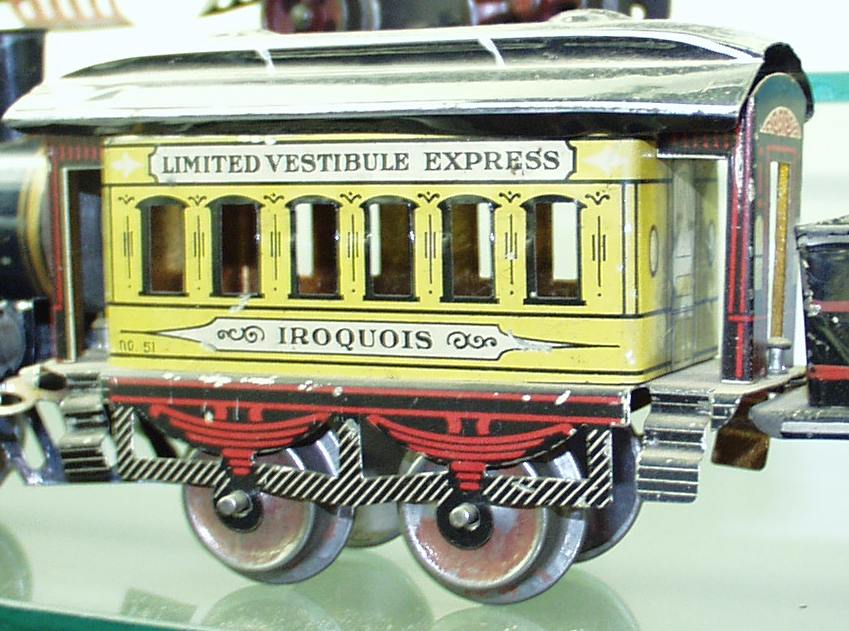
Compare the car above which is a lighter yellow with the one below which is almost orange.
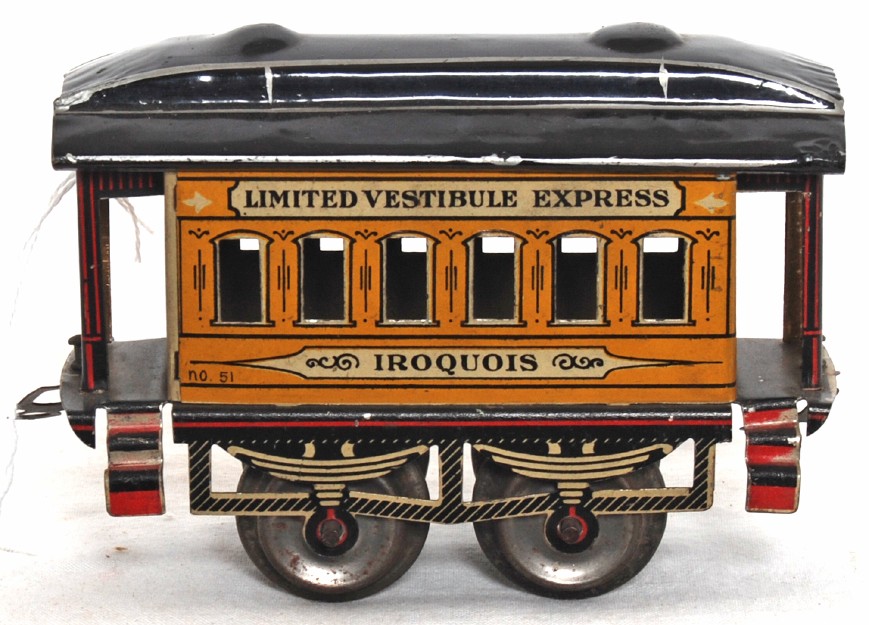
Another early 3 color white spring Iroquois. This car which is often referred to as the 2-tone brown by collectors, actually the background color on this car is a yellow/orange and matches the background color on the orange white spring baggage car that it was found with. Based on some of the original sets we've found, we believe some of these brightly colored Iroquois cars were made as early as 1903 and may have been used for 'Special Sets'? or more expensive 2 and 3 car sets that came with the larger cast iron No. 11 and unique white spring tender. Whatever the use, these white spring cars are very hard to find and were probably only made for a short period of time.
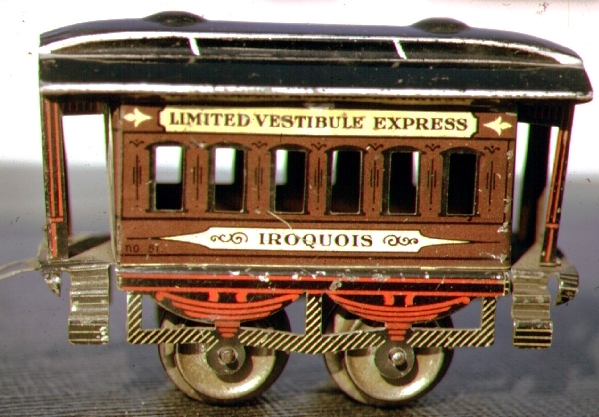
The More common (actually not so common) of the brown tri-color lithographed early Iroquois cars is the one pictured above; again you can see all three colors on the sides and that this one has a type 4 frame.
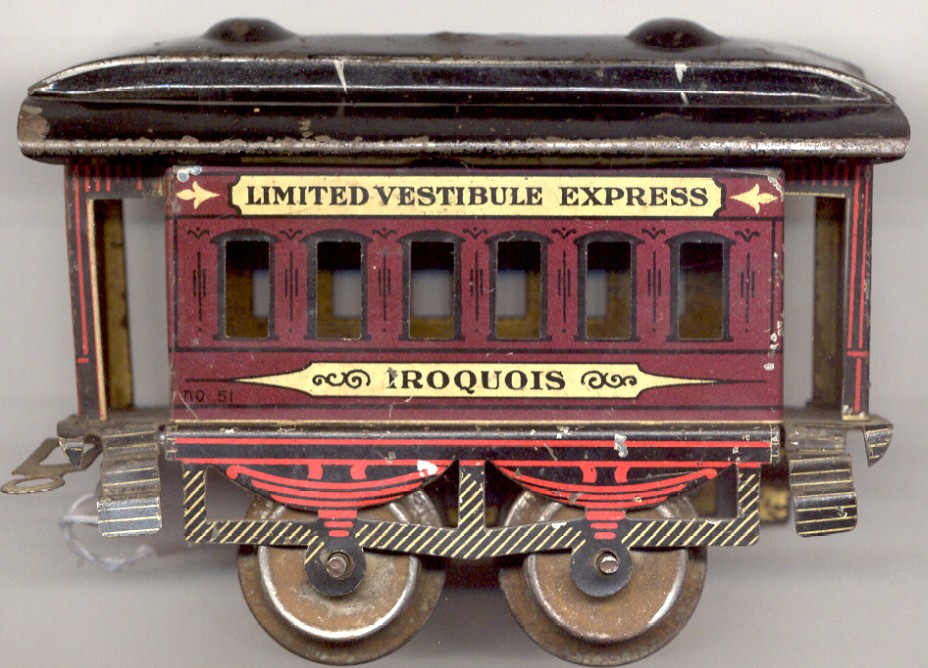
We call this the plum variation, as it has the color of a ripe plum - or deep purple. The one above has a Type 4 frame and the one below has a Type 3 frame. Below the white spring car is a side view showing the tri-color lithography.
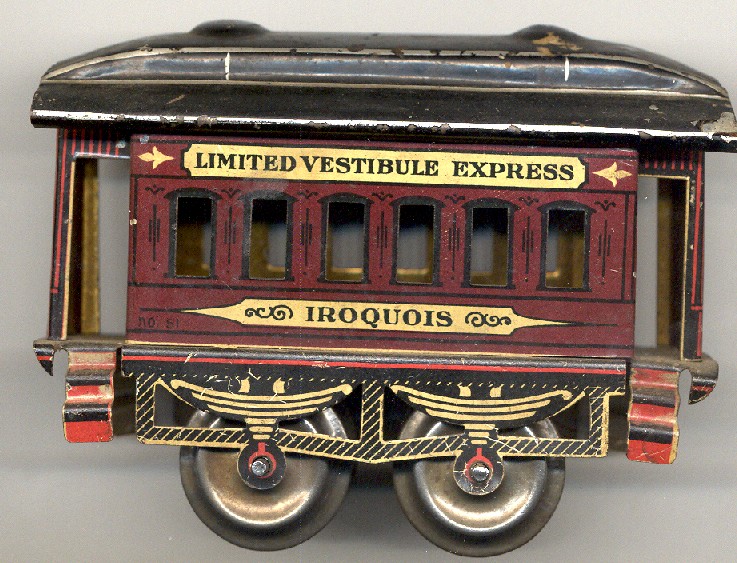
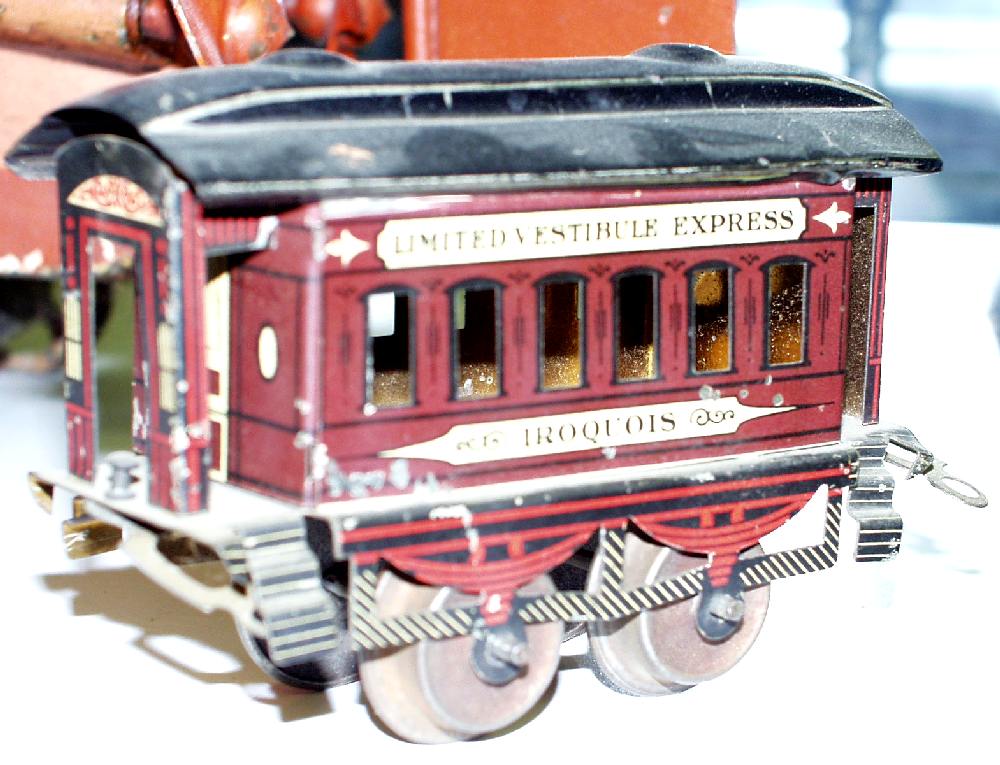
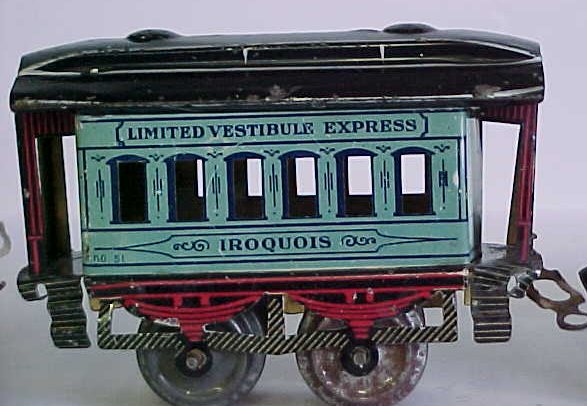 |
 |
Another color variation of the early 3 color litho Iroquois car is this blue/green variation, here you have to look at the end doors and windows to see the third color. The car pictured above has a type 4 frame but we have seen at least one example with a Type 3 frame.
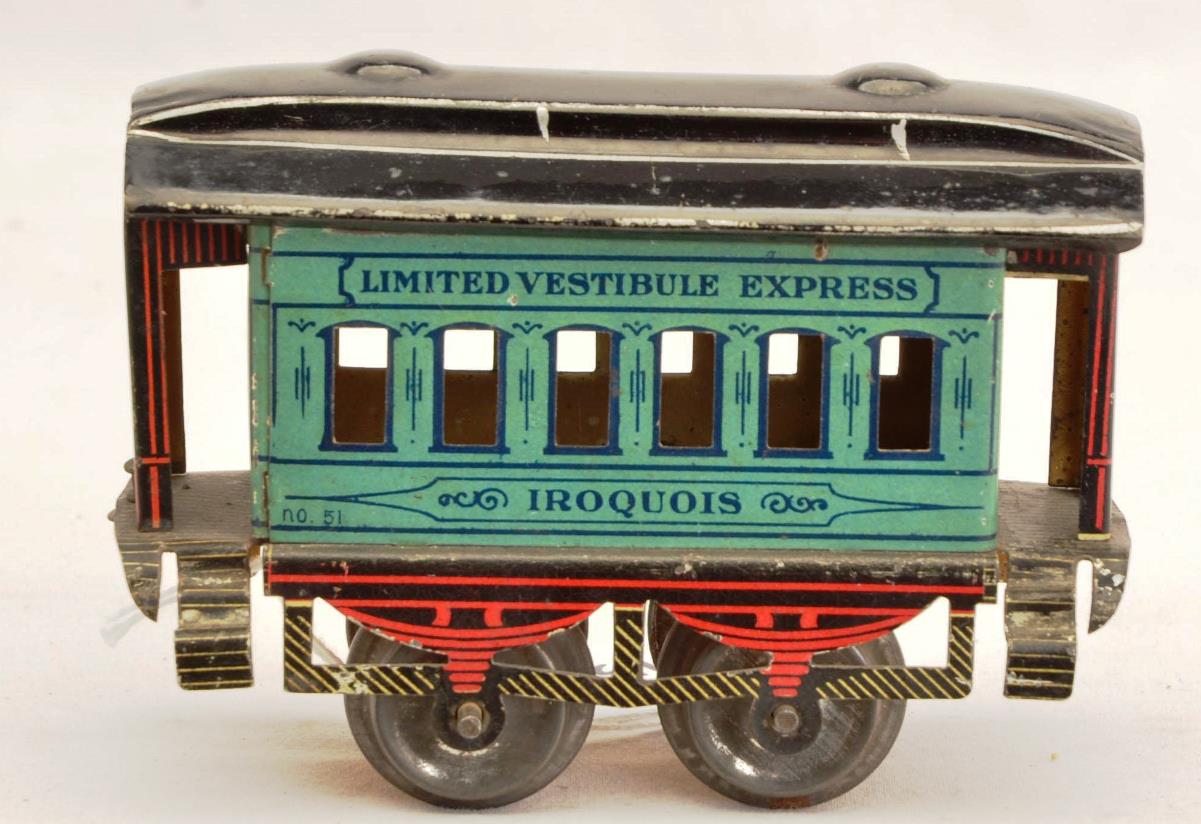

Another early color variation of the Iroquois car, this one is green and has white litho doors and windows on the ends.
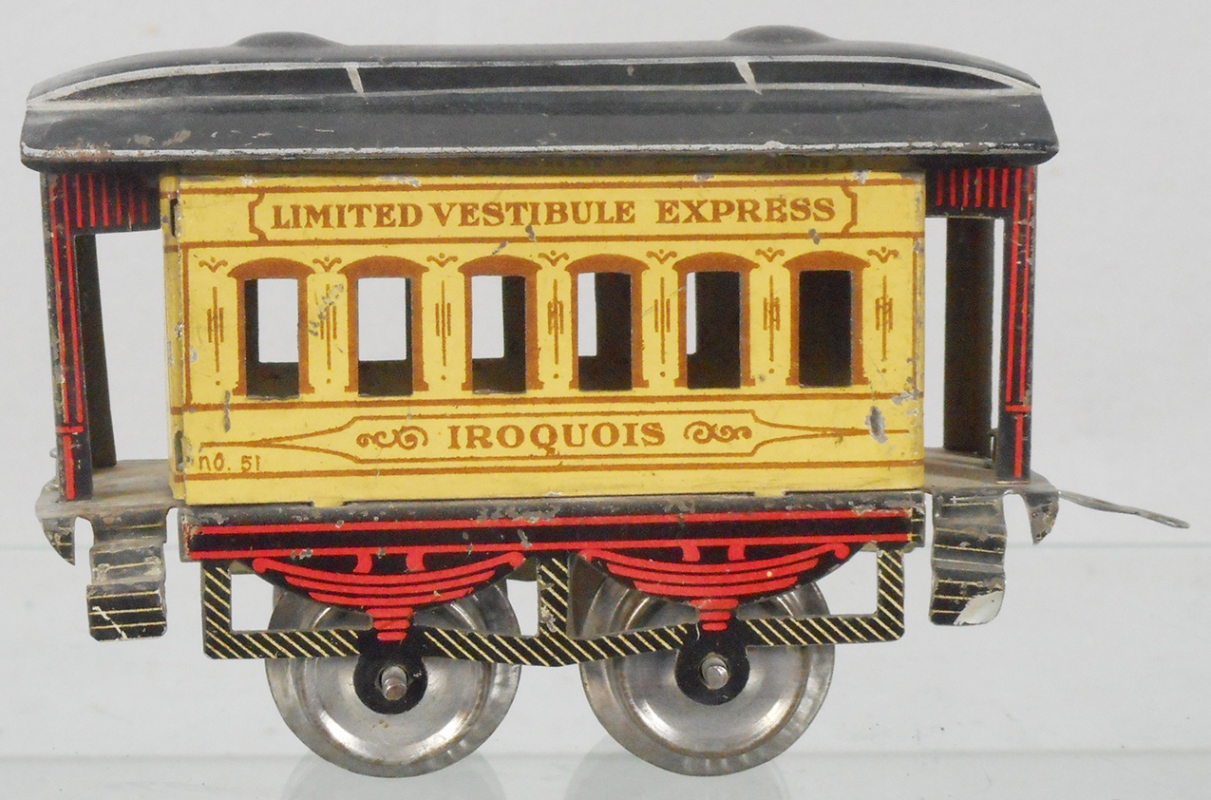
As a general rule most early Iroquois cars have 3 color litho - here's an exception or at least the missing link. This car is beige with brown trim and lettering, although it does have the type 4 frame, it does only have 2 colors to the Litho. The example below is the same color but has solid yellow vestibles.
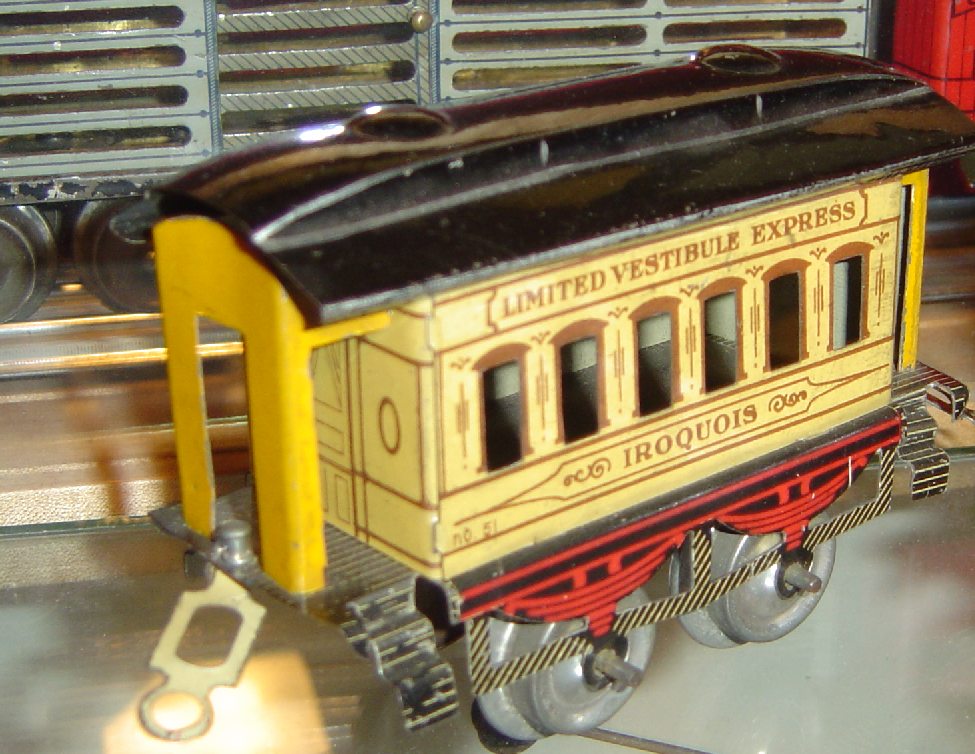

Above and below are the more common two color litho Iroquois cars. The Yellow Iroquois below has a later type 6 frame than the red one above with a type 5 frame.
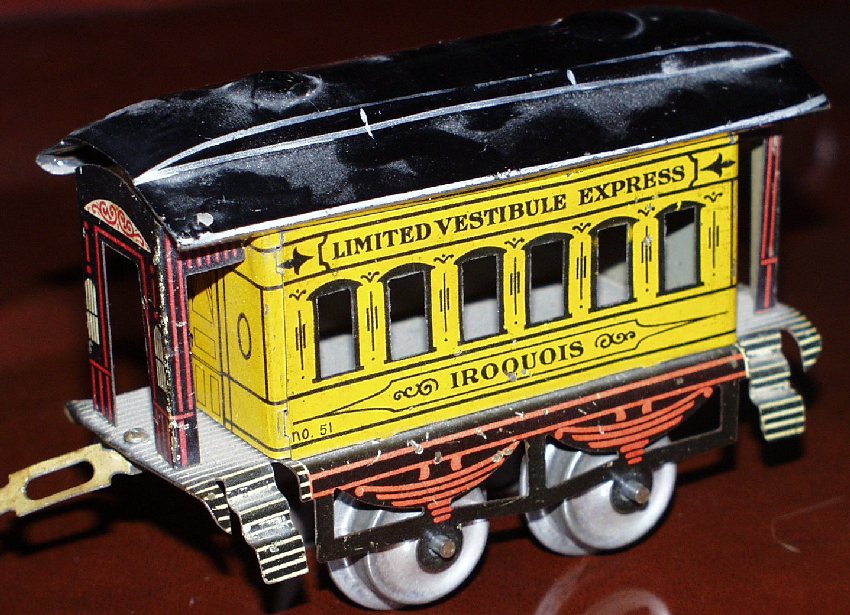
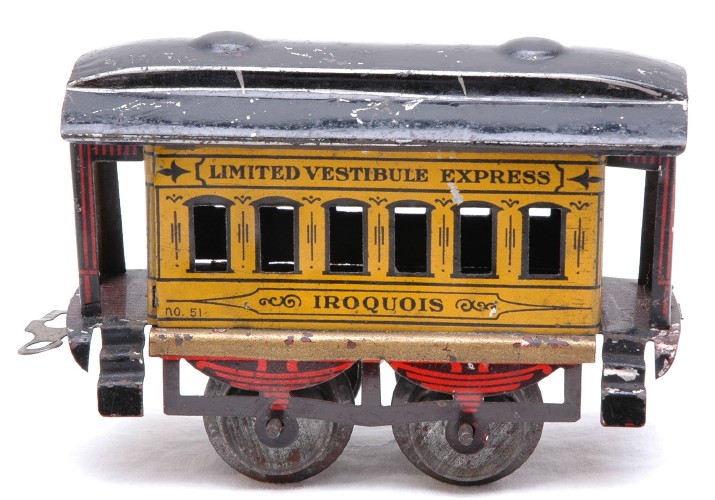
Later Iroquois, circa 1906-08 in yellow with gold band on frame. We don't know the significance of the cars with the gold stripe, but there are enough surviving examples to suggest this was done for some specific marketing?
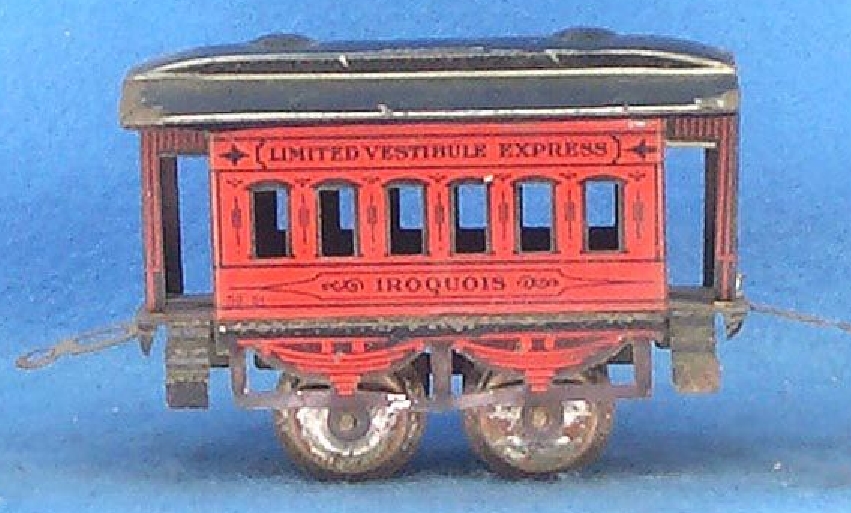
Late Iroquois with unusual no hatching frame.
| The following cars are all Hiawatha Cars and have two color lithography. To the best of our knowledge Hiawatha cars only came in the red and yellow variations. |
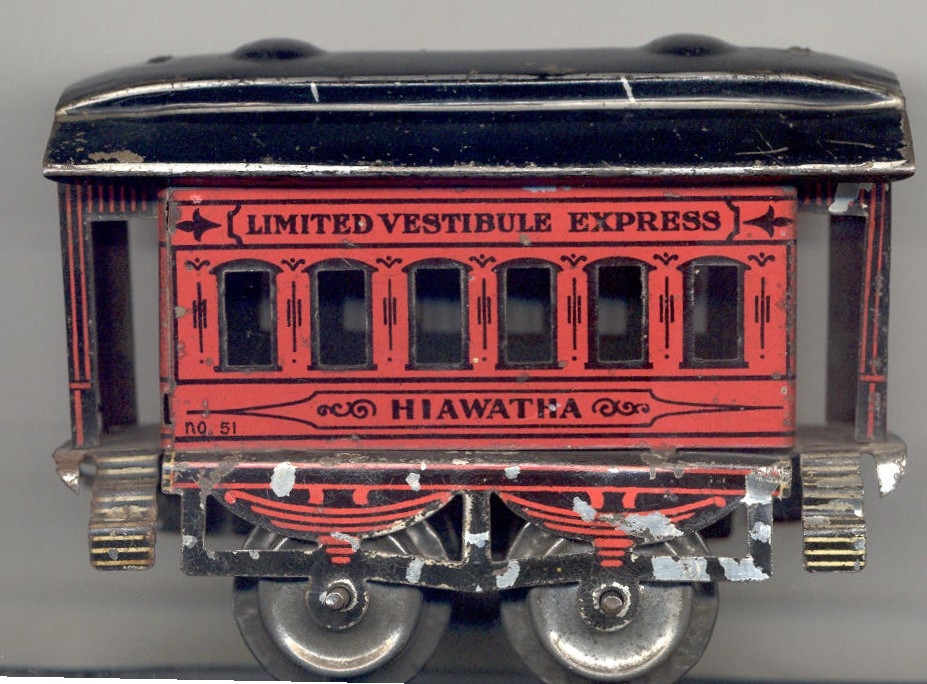
Here's the most common one with white hatching on the steps and no hatching on the frame (type 6). To the best of our knowledge all Hiwatha cars only came in two color lithography and are generally later in manufacture than the Iroquois cars.

The same car as above but this one has a type 5 frame.
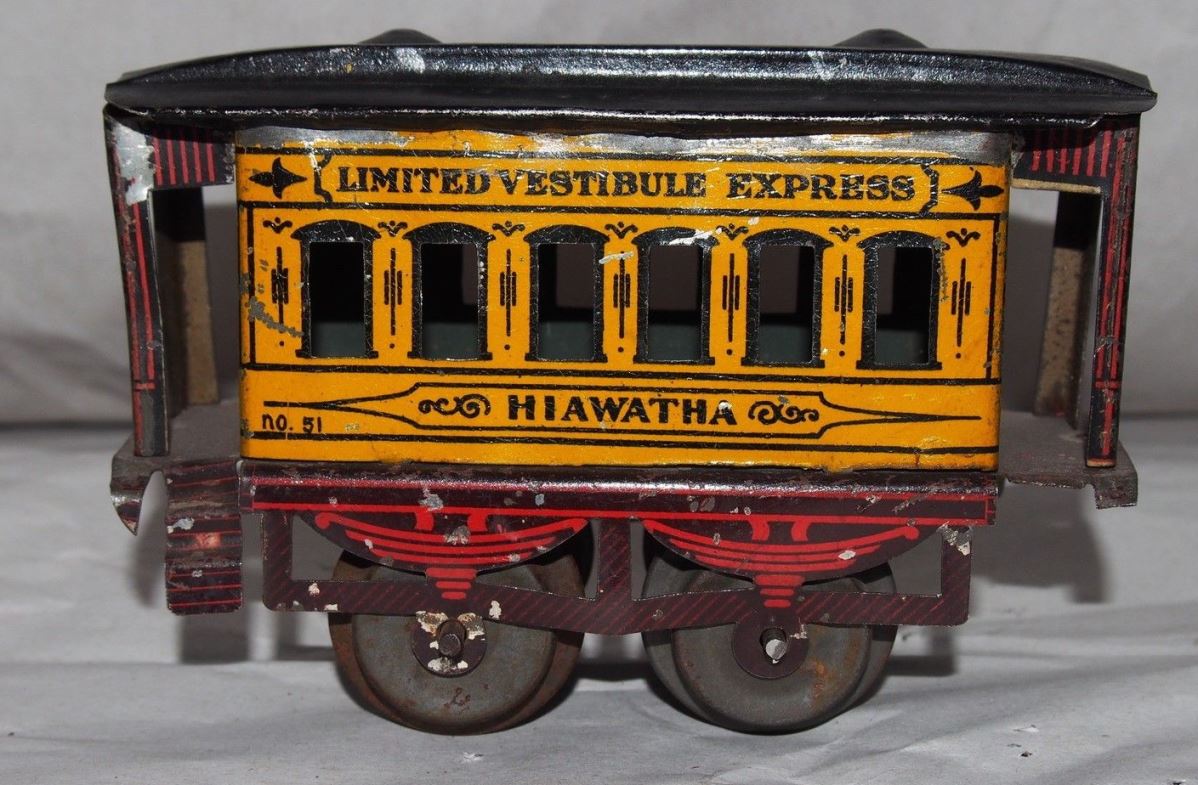
I'm not sure about this one, it has red hatched steps with a red hatched frame. Only one I've ever seen.
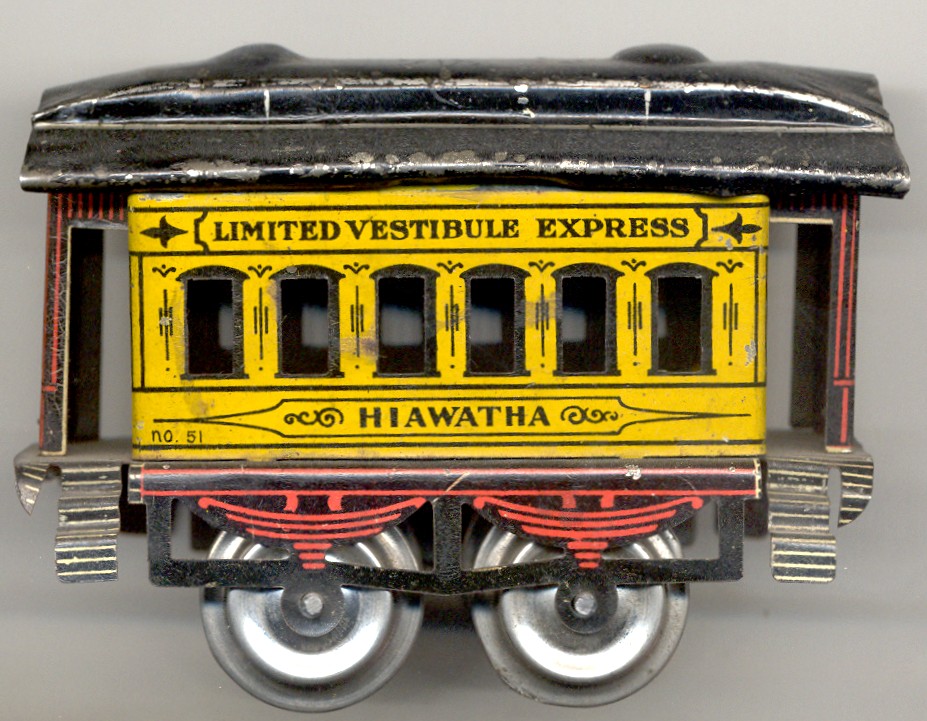
A late yellow variation of the Hiawatha with a type 6 frame.
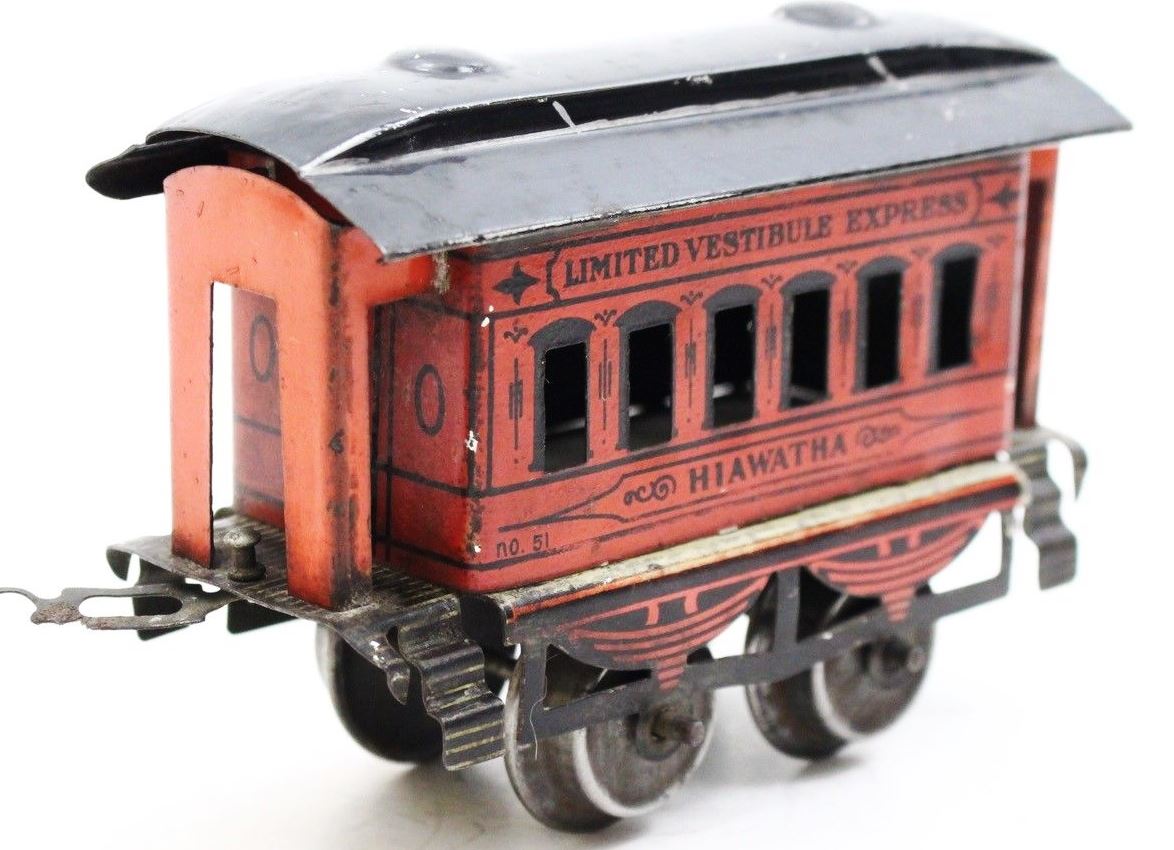
Late 51 Hiawatha with gold stripe and all red vestibule.
|
|
|
Another late yellow Hiawatha this one has the cherry striped vestibules.
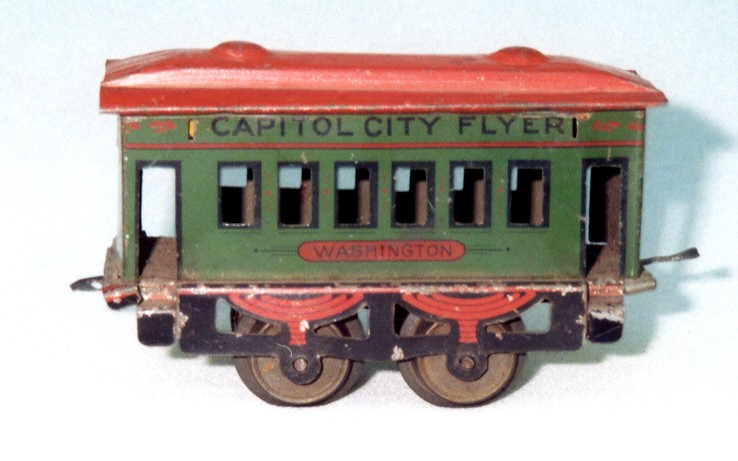
Circa 1909 - This Capitol City Flyer coach marked 'Washington' under the windows is not Ives but American Miniature Railway - look familiar?
| O Gauge | Locomotives | Passenger | Freight | Trolleys |
| Wide Gauge | Boats | Boxes | Specials | Index |
| One Gauge | Catalogs | Accessories | Wiring | Factory |
